
Table of contents:
- Roof shingles: properties, advantages, service life, installation features
- Purpose and advantages of using shingles when installing the roof
- Features of the manufacture of roofing shingles
- Laying shingles on the roof structure
- Replacing old shingles
- Proper care of a wooden roof is the key to its continued use
- Reviews
- Author Bailey Albertson [email protected].
- Public 2023-12-17 12:53.
- Last modified 2025-06-01 07:32.
Roof shingles: properties, advantages, service life, installation features

The developments of the past centuries are taken as a basis for new building materials. So, shingles were used by our ancestors for many years as the main roof covering that meets the requirements of the standard of that time. Such a roof not only looked beautiful, but also provided reliable protection of living quarters from various kinds of negative factors. Modern developers classify shingles as refined, expensive materials that require special skills to perform flawless installation. Despite the lack of craftsmen who are well versed in the technology of work, as well as the high cost, you should pay attention to the shingle roof, which will serve for many decades.
Content
- 1 Purpose and advantages of using shingles when installing the roof
-
2 Features of the manufacture of roofing shingles
-
2.1 Instructions for making roofing shingles with your own hands
2.1.1 Video: how to make shingles with your own hands
-
-
3 Laying shingles on the roof structure
3.1 Video: laying shingles on the roof with your own hands
-
4 Replacing old shingles
- 4.1 Service life of shingles
- 4.2 Ways to increase the service life of shingles
- 5 Proper care of a wooden roof is a guarantee of its long-term use
- 6 Reviews
Purpose and advantages of using shingles when installing the roof
Shingles are one of the impeccable natural and environmentally friendly materials presented in the form of small wooden plates 3-8 mm thick, produced in widths of 8-16 cm and lengths of 35-45 cm. Common names for the material include wooden tiles, shingles, shingles.

Shingles are a natural material
Depending on the manufacturing features, the shingles can be of the following types:
- Chipped - the most practical due to such properties as stability of shape and protection from decay processes. When harvesting wood, the integrity of tubular fibers is maintained, which prevents moisture from accumulating in the structure of the material.
- Sawed.
- Mosaic - widely used as a decorative coating.

A house with a shingle roof looks very colorful
The main positive properties of a shingle roof include:
- Tightness of the topcoat.
- Long service life. Compliance with the installation technology and proper care will allow the shingles to be used for at least 100 years.
- Layer reliability - the strength of the material is laid in natural conditions.
- Resistance to moisture in all conditions (rain, snow, ice).
- Good ventilation capacity.
- High thermal insulation characteristics.
Regardless of the wishes of the owner of a private house and the design features of the roof, wooden tiles are available for any finish. Shingles are laid in the most severe climatic conditions when exposed to large snow covers, low temperatures, and gusty winds. This material can be used for curved roofs, and the number of layers is determined based on the functions of the roof. To form a waterproof and dense coating, the shingles are mounted in several layers.

Shingle has several names
When comparing shingles with other analogs, the difference in material properties and installation technology is noted. Elements of wooden shingles are fastened according to the principle of scales in fir cones, as a result of which swelling and closure of the coating parts is achieved at high humidity, and at the time of drying, the plates take a dome-shaped shape, thereby releasing moisture outward.
In a house with a shingle covering, it will be comfortable even on hot summer days, since wood does not have the ability to transfer heat like metal or tiles.
The relief structure of the finishing layer serves as soundproofing of living quarters from the sound of rain and hail. With a breathable natural base, the shingle is naturally ventilated. In order to increase the service life of the supporting roof structure, it is recommended to install it on the shingle-roof principle. This will provide an additional ventilated gap.
Features of the manufacture of roofing shingles
Material production is carried out in two ways: manually and mechanically. Coniferous woods (spruce, pine, larch) or aspen are selected for manufacturing. Thanks to the resin produced by the trees, the material has natural antiseptic protection and is able to withstand temperature fluctuations. Summer, spring and autumn are the most suitable seasons for harvesting raw materials. The diameter of the trunk can be any, the main thing is that it is free of knots, defects, and its surface is as flat as possible.

You can make a shingle yourself
Sawed logs of the required size are manually processed by removing the core and bark. A distinctive feature of the industrial production of shingles is the sawing of logs with long logs, followed by the manufacture of a bar, the width of which is equal to the shingle. The wooden planks themselves are obtained by unfurling the timber.
In terms of dimensions, a shindle, prepared by hand, reaches 40-45 cm, machined parts are 2 times longer, that is, 80-90 cm. The first option is used for standard roofing structures, the second is perfect for both roofs with long slopes and and for ordinary roofs, but it will be necessary to cut the shingles in half.
DIY instructions for making roofing shingles
You can prepare the material for laying the roof yourself, following the sequence of work.
- Selection of an even tree trunk without cracks.
- Cut logs 40-45 cm in length.
-
Harvesting thin logs using the following technology:
- the log is cut in half or into four quarters,
- the bark is removed,
- the core is removed,
-
the remaining material is cut into thin plates - shingles 3-8 cm thick and the desired width - from 8 to 18 cm.

Worker Planks Shingles For work, you need to use only a sharp tool
The process can be simplified by using already mechanically processed wood, followed by sawing long planks into short elements. In this case, the material will last a shorter period, since the raw material was not split into fibers - it was simply cut. In short, to preserve the quality of the shingles, it is recommended to use the peeling method, which, although very long, is the most practical for manual harvesting of material.

Shingles can also be made mechanically
Video: how to make shingles with your own hands
Laying shingles on the roof structure
When installing wooden tiles, it is enough to follow a number of rules, and then the coating will turn out to be durable and of high quality.
-
The planks are fastened with an overlap on the crate in 4 layers on the roofs of residential premises and in 2 layers on non-residential buildings. The lathing can be made solid or with the placement of slats at a distance of no more than 10 cm from each other. Laying shingles is allowed horizontally and vertically if the slope angle is more than 15 degrees.

Shingles laying scheme You need to lay shingles with an overlap
- Waterproofing on the roof can not be done, despite the advice of many developers in the need to lay a layer of roofing material. Our ancestors did not resort to additional means of protecting the roof in the form of waterproofing or solid sheathing, explaining this by the fact that wooden tiles need to "breathe" freely. Roofing material will not let the air flow through, exposing the tree to rot. The shingle independently copes with the protective function: in wet weather it swells, closing the cracks in the roof, and in dry weather it shrinks, allowing air to freely penetrate into the under-roof space.
-
The planks are laid from the bottom up with the addition of a layer at the slope descent and the installation of auxiliary boards 40 cm wide.

Worker lays shingles You need to lay the shingles from the bottom up
- Self-tapping screws for working with shingles, pre-impregnated with drying oil, are used as fasteners.
- In the process of splitting the log into strips, the wood fibers bend and rise, therefore, when creating the first row, the plates should lie so that the stitches look up, and the subsequent ones are formed on the contrary - with the stitches down.
- Particular attention should be paid to the installation of shingles in the valleys, where the crate is supplemented with strips, and the shingle consists of more layers than the rest of the coating.
Handmade wooden tiles are highly resistant to bad weather, perfect sound insulation, and are not a source of static electricity accumulation.
Video: laying shingles on the roof with your own hands
Replacing old shingles
To remove a damaged roof element, use a peg to raise the whole shingle located above the one being replaced. The defective part is split into pieces with a chisel and removed. The remaining caps of the self-tapping screws are cut off.
If several rows are to be replaced, then work begins from the lowest elements. New tiles are cut according to the parameters of the resulting void so that a gap of at least 6 mm is obtained from each edge of the plank.
If the new element does not enter the opening or enters at a different angle, it is enough to cut off part of its thin end. Shingles should be started by tapping on the bar.
Service life of shingles
Among the factors that have a great influence on the duration of the operation of the roof, stand out:
- selected wood,
- used procurement technologies,
- features of raw materials processing.
Subject to the rules for harvesting wood, when cutting the material is completely excluded, a shingle roof can stand for many decades, up to 100 years. If the material was obtained by sawing unripe wood, then you will have to think about replacing the roof in a few years. An important point is the maintenance of the finished product. So, with the timely processing of wooden elements, you can achieve a long term of their use.

The service life of shingles is about 100 years
Wooden roofs are at great risk from exposure to sunlight and wind. This leads to drying of its fibers. Loss of moisture is fraught not only with external changes in the coating, but also with the loss of its original properties. The shingles are gradually cracking, the tightness of the roofing layer is broken, the roof needs repair.
High humidity is no less dangerous for shingles. If during installation some areas were laid in violation of the technology, then when the tree swells, proper ventilation will not be carried out, which will lead to a distortion of the entire canvas.
Ways to increase the operating life of shingles
Wood is a raw material that reacts strongly to temperature fluctuations and changes in moisture levels. Therefore, a layer of varnish on it with constant expansion and contraction of the structure will quickly crack. Moisture will begin to penetrate through the resulting defects without the possibility of natural evaporation, which will lead to the reproduction of microorganisms and decay. In order for the wooden shingle to retain its original beauty and technical characteristics for a long time, it is enough to process it periodically. A large number of construction companies supply the market with special products for the treatment of wooden structures, which prevent the processes of decay, drying and bacterial damage.
- Semi-transparent penetrating oils are the market leader. They are impregnated with the top layer of the coating. This treatment guarantees the preservation of the wood texture for many years.
-
Water repellent compounds - transparent impregnations on a wax or acrylic resin base help to maintain the appearance of the roof, but due to the short protective effect, they must be applied at regular intervals.

Water-repellent treatment for wood Wax-based formulations will help protect shingles from decay
- The use of varnish and paint is the most controversial way of roofing.
A flawless finish is achieved by fully immersing the wood elements in the protective compound before they are attached to the roof. In the future, it will be enough to cover the surface with a protective agent using a brush or spray.
Proper care of a wooden roof is the key to its continued use
Like any structure, a roofing shingle needs proper maintenance, which even a novice master can handle:
- As it accumulates, a layer of snow is swept away with a broom, starting from the top - from the ridge element, ending with the edge of the slope.
- The lower rows of shingles are prone to displacement and require timely identification and repair.
- Fallen foliage in the fall is washed off by precipitation or flies off by itself, but you should not neglect the cleaning of the roof from branches and remaining leaves.
- Moss can grow on a wooden roof, so it is important to detect it in time and remove it by weeding or cutting with a spatula.
- Prolonged use of shingles can lead to clogging of gutters with accumulated resin. You can easily fix the problem by cleaning them inside.
Reviews
Thus, despite the high requirements for construction and maintenance, roof shingles are a practical, reliable, beautiful and exclusive roof covering. With proper installation, such a structure can withstand high loads and serve for many years.
Recommended:
The Roof For The Hangar, How To Do It Right, Including With Your Own Hands, As Well As The Features Of Its Design And Installation
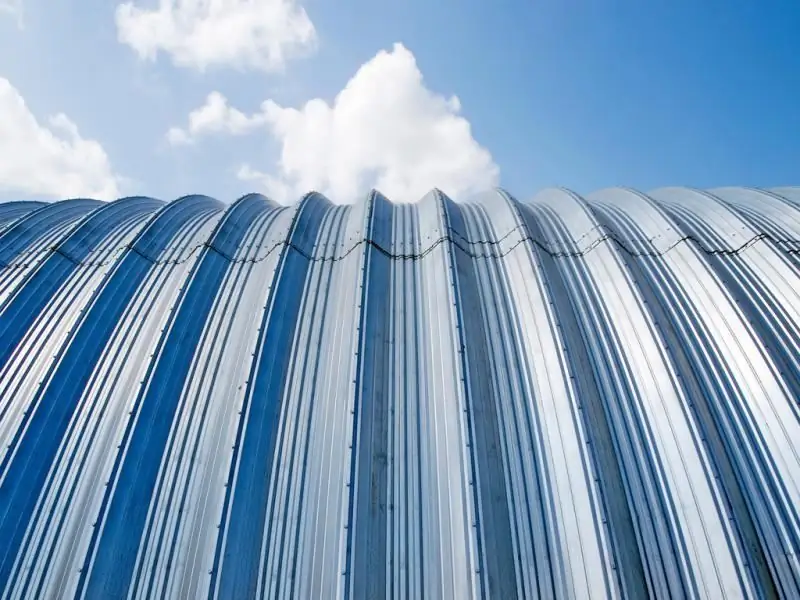
How the hangar roof shape depends on its function. The better to insulate the hangar roof. DIY hangar roof assembly instructions
How To Make A Roof For A Bathhouse, Including With Your Own Hands, As Well As The Features Of Its Design And Installation
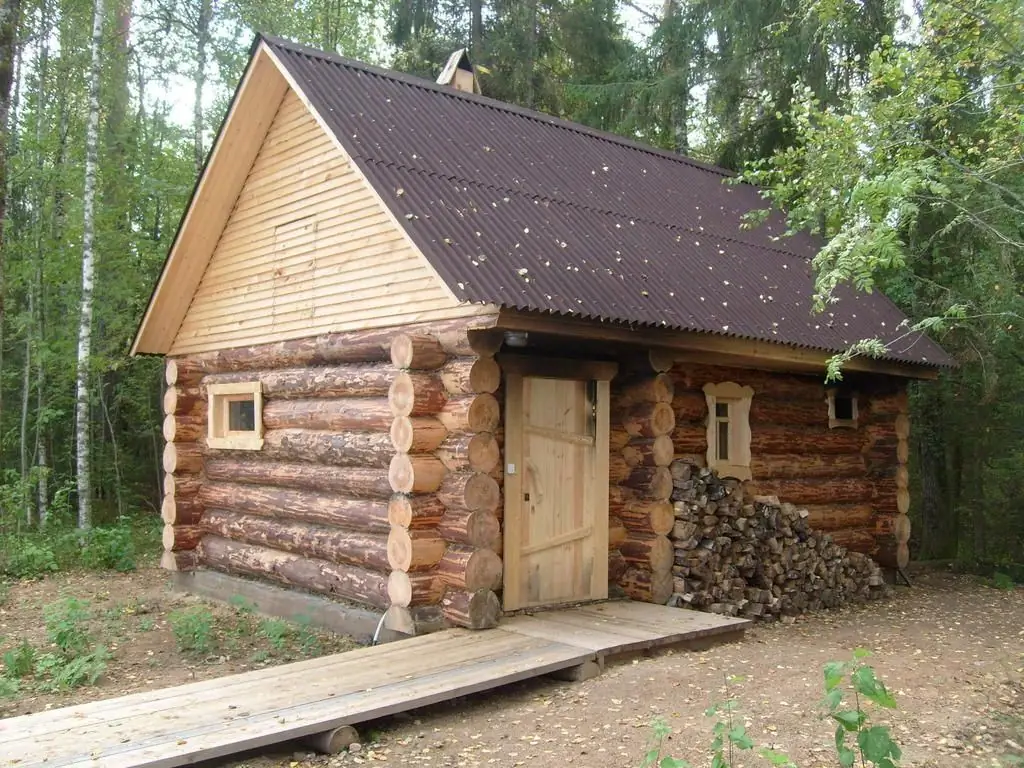
Types of roofs in baths and features of their design. The choice of materials for this design. Roof construction for a bath. Bath roofing repair
Shed Roof For A Garage, How To Do It Right, Including With Your Own Hands, As Well As The Features Of Its Device And Installation
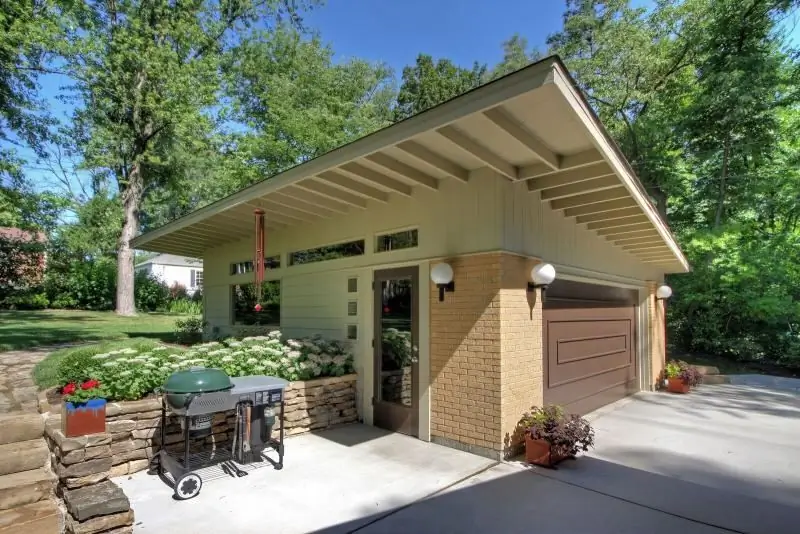
Existing types of pitched roofs. Features of creating and maintaining such a structure in their own hands. What tools and materials you need to have
How To Make A Roof For A Summer Residence, Including With Your Own Hands, As Well As The Features Of Its Design And Installation
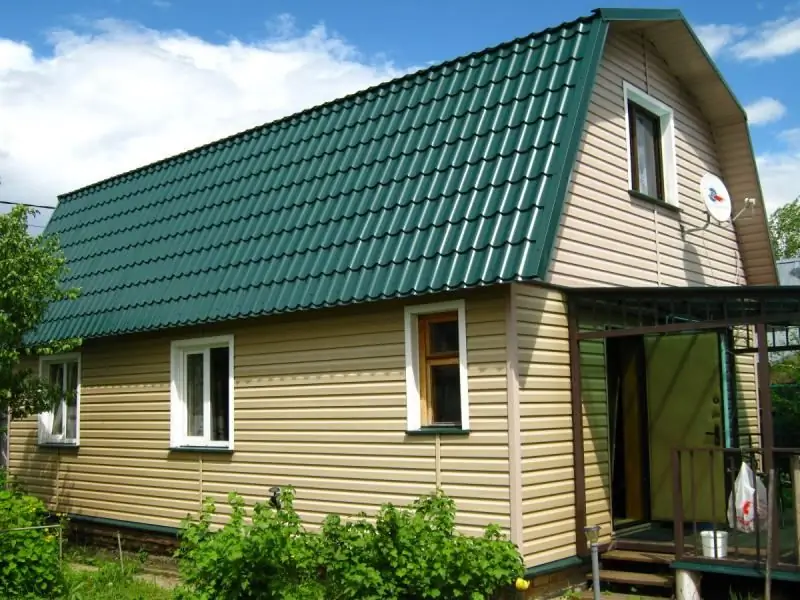
Types of roofs for summer cottages. Calculation and selection of materials. DIY installation and insulation, Dacha roof repair with replacement of materials
Installation Of Roof Windows, Including With Your Own Hands, As Well As Installation Features In An Already Finished Roof
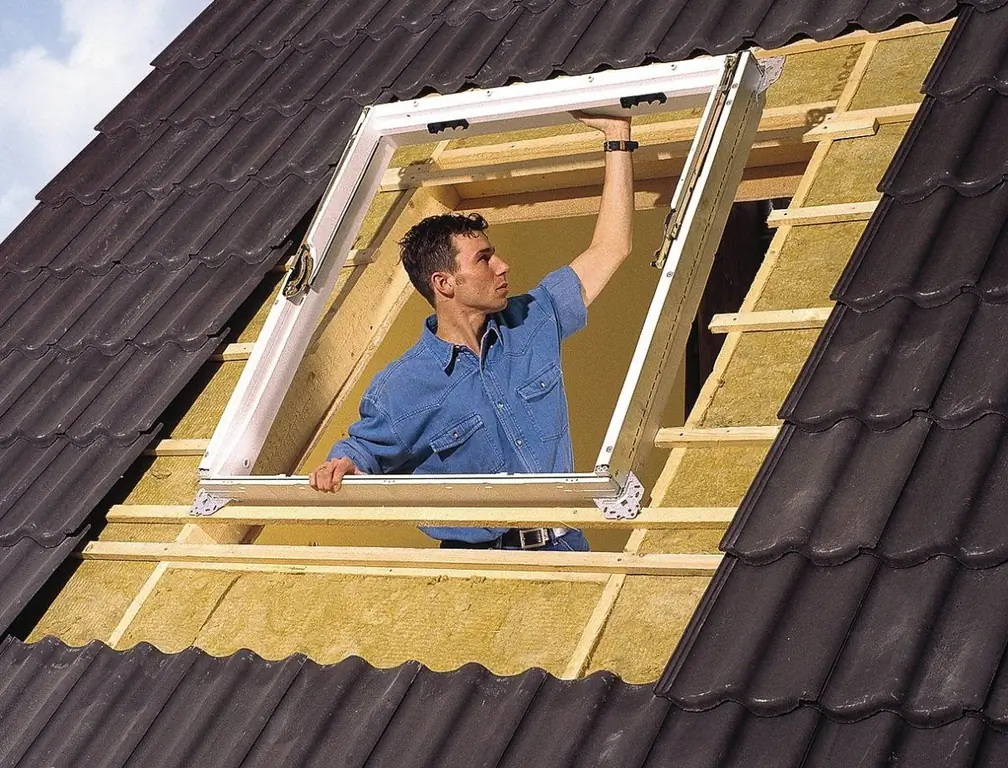
Step by step instructions for installing a roof window. Features of technology and nuances of installation in various types of roofing
